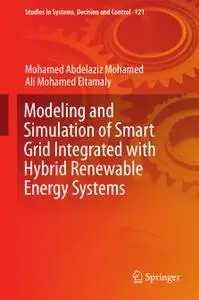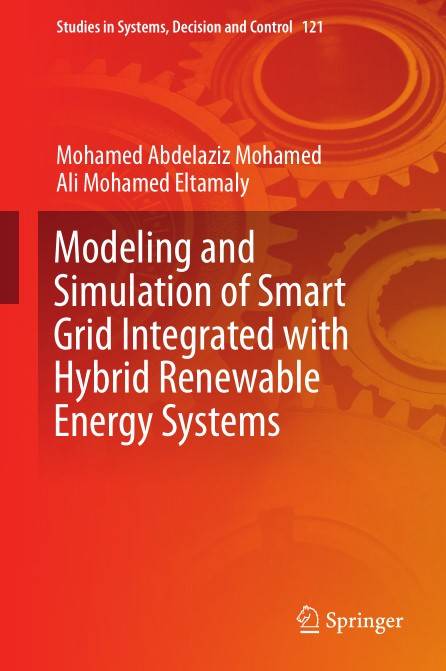Prof. Mohamed Abdelaziz Mohamed, Ali Mohamed Eltamaly, "Modeling and Simulation of Smart Grid Integrated with Hybrid Renewable Energy Systems"
English | EPUB | 2018 | 91 Pages | ISBN : 3319647946 | 3 MB
English | EPUB | 2018 | 91 Pages | ISBN : 3319647946 | 3 MB
This book presents a comprehensive definition of smart grids and their benefits, and compares smart and traditional grids. It also introduces a design methodology for stand-alone hybrid renewable energy system with and without applying the smart grid concepts for comparison purposes.
It discusses using renewable energy power plants to feed loads in remote areas as well as in central power plants connected to electric utilities. Smart grid concepts used in the design of the hybrid renewable power systems can reduce the size of components, which can be translated to a reduction in the cost of generated energy. The proposed hybrid renewable energy system includes wind, photovoltaic, battery, and diesel, and is used initially to feed certain loads, covering the load required completely. The book introduces a novel methodology taking the smart grid concept into account by dividing the loads into high and low priority parts. The high priority part should be supplied at any generated conditions. However, the low priority loads can be shifted to the time when the generated energy from renewable energy sources is greater than the high priority loads requirements. The results show that the use of this smart grid concept reduces the component size and the cost of generated energy compared to that without dividing the loads. The book also describes the use of smart optimization techniques like particle swarm optimization (PSO) and genetic algorithm (GA) to optimally design the hybrid renewable energy system.
This book provides an excellent background to renewable energy sources, optimal sizing and locating of hybrid renewable energy sources, the best optimization methodologies for sizing and designing the components of hybrid renewable energy systems, and offers insights into using smart grid concepts in the system’s design and sizing.
It also helps readers understand the dispatch methodology and how to connect the system’s different components, their modeling, and the cost analysis of the system.



